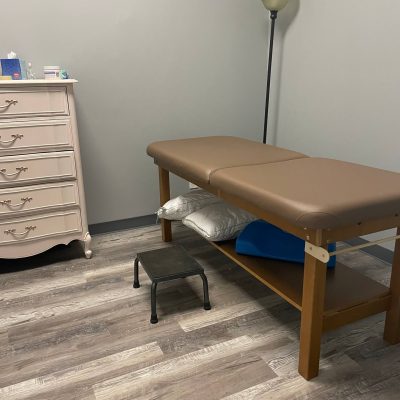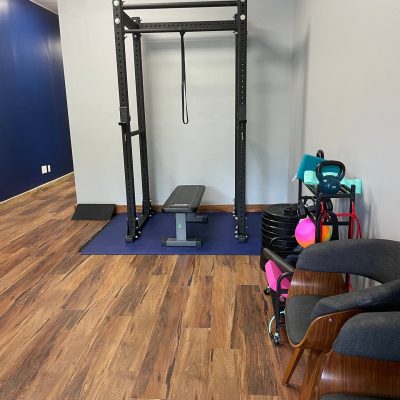You’re halfway through a great workout—lifting, running, jumping rope—and suddenly, you feel it: that small (or not-so-small) leak you didn’t sign up for.
If this sounds familiar, you’re not alone. Urinary incontinence during exercise is incredibly common, yet it’s still a topic many people feel embarrassed to talk about. As a pelvic floor physical therapist, I can tell you—this isn’t just “part of getting older” or “the price of having kids.” It’s a sign your body needs some attention, and the good news is, there’s a lot we can do about it.
First Things First: What Counts as Urinary Incontinence?
Urinary incontinence simply means leaking urine when you don’t want to. When it happens during exercise, it’s most often stress urinary incontinence (SUI)—leakage triggered by activities that increase pressure in your abdomen, such as:
- Running or sprinting
- Jumping jacks, jump rope, or box jumps
- Heavy lifting
- High-impact sports like tennis or basketball
That increase in pressure pushes down on your bladder, and if your pelvic floor muscles (and surrounding core muscles) can’t coordinate and support properly, some urine escapes.
Why It Happens During Exercise
Think of your pelvic floor muscles as a supportive hammock at the bottom of your pelvis. They have three key jobs:
- Support your pelvic organs (bladder, uterus, rectum)
- Control bladder and bowel openings
- Work with your deep core to stabilize your spine and pelvis
When you jump, lift, or run, your intra-abdominal pressure spikes. Your pelvic floor is supposed to respond instantly, contracting just enough to keep things closed and supported. But if the timing, coordination, or strength of that contraction is off—even by a fraction of a second—leaks can happen.
Several factors can contribute:
- Pregnancy and childbirth (vaginal or C-section)
- Hormonal changes during menopause that affect tissue elasticity
- High-impact training without pelvic floor conditioning
- Previous abdominal or pelvic surgery
- Chronic coughing or constipation (yes, straining matters here too)
Myth Busting: It’s Not Just About “Do More Kegels”
Kegels—the classic “squeeze your pelvic floor” exercise—are helpful for some people, but not everyone. If your pelvic floor is overactive, tense, or not coordinating well with the rest of your core, simply doing more squeezes can make things worse.
In fact, I see many athletes with pelvic floor muscles that are already too tight, which means they can’t generate the right type of quick, effective contraction when needed. The focus often needs to be on coordination, timing, and pressure management, not just strength.
How a Pelvic Floor PT Can Help
When someone comes into my clinic with exercise-related leaks, here’s how we typically start:
- Detailed Assessment
We look at posture, breathing mechanics, pelvic floor muscle activation, and how your core and hips work together. If appropriate, we also do an internal pelvic floor assessment to understand muscle tone, strength, and coordination.
- Breath & Pressure Control
The way you breathe during exercise can make or break your pelvic floor’s ability to function. We work on strategies like exhaling during exertion (for example, when lifting the heaviest part of a weight or during a jump) to keep pressure manageable.
- Functional Training
We practice pelvic floor activation and relaxation in positions you actually use—standing, squatting, lunging—not just lying on your back.
- Gradual Return to High Impact
We break down the movement causing the leak into smaller steps and retrain your body to manage the load. For example, before going back to box jumps, we might progress from squats → squat jumps → low box jumps → full height jumps.
Your At-Home Starting Point
While the most effective plan is tailored to you, here are a few beginner-friendly strategies you can try:
- The “Blow Before You Go” Strategy
Before lifting, jumping, or any high-exertion move, exhale gently and activate your pelvic floor + deep core together. This preps your body for the pressure spike. - Coordinate With Your Breath
Avoid holding your breath (Valsalva maneuver) during strength training unless you’ve been specifically coached on safe ways to do so for pelvic health. - Mix in Low-Impact Options
If you’re in the middle of rehab, swap some high-impact moves for low-impact variations to reduce strain while building back capacity. - Address the Whole Core
Your pelvic floor works closely with your transverse abdominis (deep abs), diaphragm, and multifidus (deep spinal muscles). Training all of them together is key.
When to Seek Professional Help
If leaking happens every workout, or you notice it’s getting worse, it’s time to see a pelvic floor PT. Also seek help if you have:
- Pelvic pain or heaviness
- Urgency/frequency changes
- Bowel symptoms (constipation, difficulty holding gas or stool)
- Lower back or hip pain that worsens with exercise
These symptoms often go hand-in-hand and point to underlying coordination issues we can address.
The Bottom Line
Leaking during exercise is common, but not normal—and definitely not something you have to live with. With the right assessment, targeted exercises, and smart training modifications, you can get back to running, jumping, lifting, and living without worrying about leaks.
Your workouts should make you feel strong and empowered—not anxious about what might happen mid-rep. Pelvic floor therapy offers the tools to get you there.
If you’re ready to take the next step, reach out to schedule a pelvic floor assessment. Whether you’re an athlete, a weekend warrior, or just getting into exercise, we can create a plan that keeps you moving confidently—leak-free.







